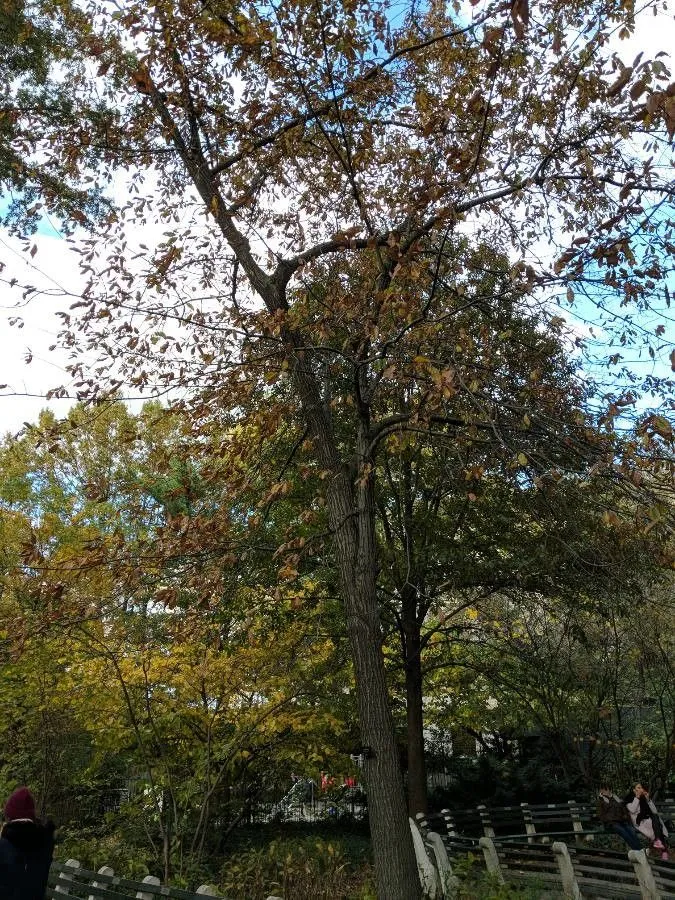
Author: Michx.
Bibliography: Hist. Chênes Amér.: 15 (1801)
Year: 1801
Status: accepted
Rank: species
Genus: Quercus
Vegetable: False
Observations: C. & E. U.S.A.
The Shingle Oak, known scientifically as Quercus imbricaria, is a distinctive member of the Fagaceae family. This tree species was first documented in Hist. Chênes Amér.: 15 (1801) by the esteemed botanist Michx., underscoring its historical significance among American oaks.
Native to the central and eastern regions of the United States, the Shingle Oak is a medium to tall deciduous tree. It typically reaches heights of 40-60 feet, occasionally stretching up to 80 feet under favorable conditions. The tree’s crown forms an attractive, broad-rounded shape with an overall dense structure.
One of the most striking features of the Shingle Oak is its leaves. Unlike many other oak species, Quercus imbricaria boasts unlobed, lance-shaped leaves with a glossy upper surface and a vibrant green hue. These leaves often persist on the tree well into winter, providing a unique year-round visual interest. The leaf margins are smooth, a characteristic that distinguishes it from many other oaks with lobed or serrated edges.
Shingle Oak flowers emerge in the spring, usually in April or May. The flowering process involves the production of both male and female catkins on the same tree. Once pollinated, the female flowers develop into acorns, which mature over a period of 18 months and are typically ripe by the second autumn.
The acorns of the Shingle Oak are a vital food source for various wildlife species, including squirrels, deer, and many bird species. Besides their ecological value, these acorns have contributed to the tree’s historical use by indigenous communities and early settlers in North America.
As suggested by its common name, the wood of Quercus imbricaria was historically used for making shingles, thanks to its durability and workability. In modern applications, Shingle Oak is appreciated more for its ornamental qualities in landscape design. Its tolerance for a variety of soil types and conditions, along with its robust growth habit, make it a popular choice for urban planting and large-scale garden projects.
In summary, the Shingle Oak is a versatile and resilient tree, admired for its unique leaf structure, ecological contributions, and practical uses. Its enduring presence across central and eastern United States landscapes continues to make it a valuable addition to both natural and cultivated environments.
Eng: shingle oak, laurel oak
En: Shingle oak, Jack oak, Northern Laurel Oak, Laurel Oak
Ca: Roure de teules
Cs: Dub celokrajný
Fi: Paanutammi
De: Schindel-Eiche
Hu: Zsindelyes tölgy
Is: Seljueik
Pl: Dąb dachówkowaty
Sk: Dub škridlicový
Taken Jun 6, 2022 by Michel Michel MONTEIL (cc-by-sa)
Taken Jun 8, 2021 by Miracle Dismuke (cc-by-sa)
Taken Jun 14, 2021 by Eliane GOUZY (cc-by-sa)
Taken Jun 14, 2021 by Eliane GOUZY (cc-by-sa)
Taken Sep 21, 2021 by Frank Schaefer (cc-by-sa)
Taken Nov 3, 2019 by Matthias Foellmer (cc-by-sa)
Taken Jul 27, 2022 by yangsheng zhang (cc-by-sa)
Taken Jun 24, 2020 by Keith Gebhardt (cc-by-sa)
Taken Jul 15, 2020 by ellenelle ellenelle (cc-by-sa)
Taken Sep 10, 2019 by Leon McNay Defty (cc-by-sa)
Taken May 29, 2022 by Dieter Albrecht (cc-by-sa)
Taken Oct 24, 2022 by M C (cc-by-sa)
Taken Sep 10, 2019 by Leon McNay Defty (cc-by-sa)
Taken Nov 6, 2021 by Sonlight (cc-by-sa)
Taken Aug 19, 2022 by Olivier Laurent (cc-by-sa)
Taken Jun 8, 2021 by Miracle Dismuke (cc-by-sa)
Taken Aug 18, 2022 by Marie Gentile (cc-by-sa)
Taken Jan 17, 2022 by Willem Defieuw (cc-by-sa)
Taken Jul 15, 2020 by ellenelle ellenelle (cc-by-sa)
Taken Nov 8, 2022 by Abhimanyu singh (cc-by-sa)
Taken Dec 8, 2021 by Herrero Laporte Sebastián (cc-by-sa)
Taken Dec 8, 2021 by Herrero Laporte Sebastián (cc-by-sa)
© copyright of the Board of Trustees of the Royal Botanic Gardens, Kew.
© copyright of the Board of Trustees of the Royal Botanic Gardens, Kew.
© copyright of the Board of Trustees of the Royal Botanic Gardens, Kew.
Growth form>: Single Stem
Growth habit>: Tree
Growth rate>: Moderate
Ph maximum: 6.0
Ph minimum: 4.5
Family: Myrtaceae Author: (F.Muell.) K.D.Hill & L.A.S.Johnson Bibliography: Telopea 6: 402 (1995) Year: 1995 Status:…
Family: Rubiaceae Author: Pierre ex A.Froehner Bibliography: Notizbl. Bot. Gart. Berlin-Dahlem 1: 237 (1897) Year:…
Family: Sapindaceae Author: Koidz. Bibliography: J. Coll. Sci. Imp. Univ. Tokyo 32(1): 38 (1911) Year:…
Family: Asteraceae Author: A.Gray Bibliography: Pacif. Railr. Rep.: 107 (1857) Year: 1857 Status: accepted Rank:…
Family: Fabaceae Author: Medik. Bibliography: Vorles. Churpfälz. Phys.-Ökon. Ges. 2: 398 (1787) Year: 1787 Status:…
Family: Aspleniaceae Author: (Cav.) Alston Bibliography: Bull. Misc. Inform. Kew 1932: 309 (1932) Year: 1932…